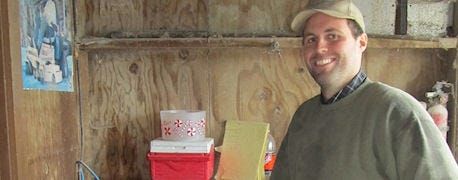September 10, 2012

Linda Greenwood, a Canton, N.Y., dairy farmer and writer came across a great, simple idea. In fact, it boosted milk production on Greenwood Dairy by 3 pounds per day per cow.
The full story will be featured in October's American Agriculturist magazine. But with today's narrow milk margins, we wanted to get enough of the story to milk producers as soon as possible.

MORE TIME, BUT MORE MILK: Garrett Eiholzer says: "[Microwaving forages] takes time, but is well worth it."
There's good reason why forage dry matter varies when sent to the forage lab verses those done at the farm using a Koster tester? George Jarrett, a nutritionist for Cows Come First, spells it out: "Normal differences are 3% higher moisture [with the Koster tester], with some over 5%," he reports. "Most producers assume the lab results are three days late, and things have changed at the bunk."
But Jarrett disagrees: "The Koster tester pulls in outside air that has moisture. Some of that moisture remains in the forage when dried; giving higher moisture results (lower dry matters). At the forage lab, their ovens use moisture-free air, getting more accurate readings.
A better on-farm test
Microwave testing is a better method, he claims. Today's process is safer. With a cup of water, plus constant vigilance it's easy to do.
Microwaves cook forage from the inside out, forcing the moisture away. It doesn't rely on blowing air through it.
Why's 3% higher forage moisture a concern? "That's lost milk!" stresses Jarrett. "If you're feeding a 55% forage diet, that 3% makes it a 56.5% forage diet. It's higher in fiber and lower in energy than what it's balanced for. On farms where I experimented using microwave testing, they increased milk production."
Garrett Eiholzer, assistant manager at Noblehurst Farm, Linwood, N.Y., says, "Results were amazing – a 4 pound milk increase at the home farm. We didn't do anything different except use moisture based on the microwave.
Eiholzer checks forages twice a week, taking samples half way through feeding and run them at the end of the day. "It takes about 15 minutes to do a sample, so I use two microwaves to test two forages at the same time.
You May Also Like




